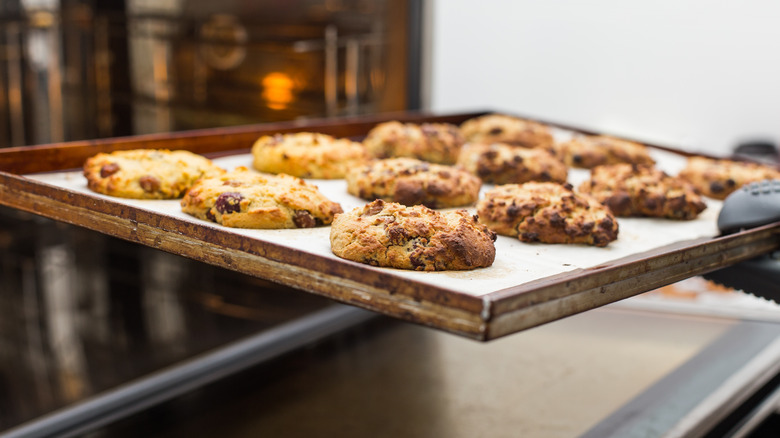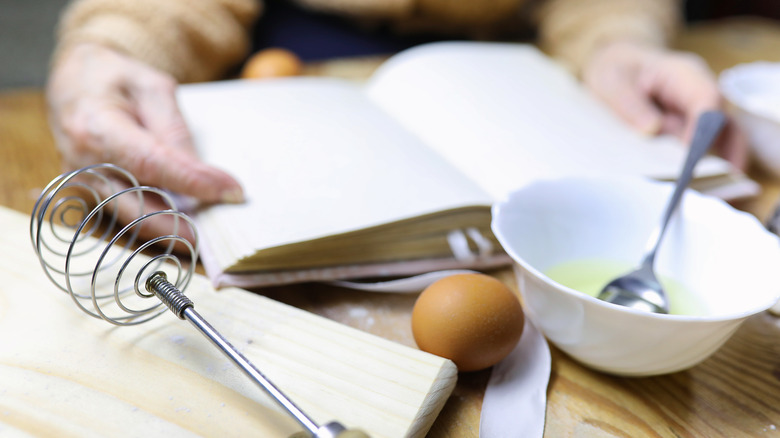What Ina Garten Does Before Doubling A Recipe
If you like to follow recipes when you cook or bake, then there have no doubt been occasions in the past when whatever delicious dish you're stirring together in your kitchen sounds so appealing that you decide you want way more of it. Maybe you've got family coming over and want enough lasagna for seconds, thirds, and leftovers; Or maybe you're meal-prepping and need enough chicken Florentine casserole to be able to tote to work all week long.
But undoubtedly, the recipes most of us tend to double are sweet, baked ones. Whether you're attending a holiday cookie swap or toting two pies to Thanksgiving, the occasions on which we need a doubled or even tripled recipe of our favorite desserts are fairly common. In the past, you may have doubled a dessert recipe without even thinking about it, but according to Barefoot Contessa Ina Garten, it's often important to have a strategy when doubling or tripling recipes.
Baking recipes don't always double successfully
If you've ever doubled a batch of cookies by simply doubling each and every ingredient and then following the rest of the recipe directions, only to have the cookies come out less deliciously than a single batch would, it probably wasn't your fault: According to cooking show host, cookbook author, and hostessing doyenne Ina Garten, baking recipes don't always double successfully.
On an installment of her YouTube series "Ask Ina," Garten addressed a viewer's confusion about doubling recipes, responding, "Baking is an exact science, and when you double it, things change." She noted that when she's making a much larger batch than a recipe yields, she doubles it, notes the outcome and makes adjustments, and then doubles that larger yield recipe again, again checking for any needed adjustments. That strategy might not be super approachable for the skill level of an average home baker, but luckily, The Kitchn provides some more concrete tips for doubling recipes.
Specific recommendations for doubling recipes
According to The Kitchn, cakes, muffins, and quick breads don't tend to double well at all because the amount of leavener gets thrown off. The outlet suggests doubling all the other ingredients besides the leavener, and then recalculating the amounts of leavener. One or 1 and a quarter teaspoon baking powder should be used per 1 cup of flour, and one quarter teaspoon baking soda per 1 cup of flour. If the recipe calls for both leaveners, The Kitchn notes, it's usually because there's an acidic ingredient (such as buttermilk) in the mix that reacts with the baking soda. In that case, double the ingredients, and add an extra quarter to a half teaspoon of baking soda per 1 cup of the acidic ingredient.
Doubling a batch of cookies or bars? Not to fear, The Kitchn advises: These recipes can usually be doubled without adjusting the ingredients, but if you're tripling or quadrupling the recipes, keep an eye on the leavening ratios mentioned above and recalculate them if needed. And if it's bread or rolls you're doubling, those should turn out fine, too. If you're tripling or quadrupling those recipes, The Kitchn recommends weighing out the ingredients, rather than measuring by volume, to make sure you'll have the best result.


